The origins of the First Americans remain contentious. Although Native
Americans seem to be genetically most closely related to east Asians1, 2, 3, there is no consensus with regard to which specific Old World populations they are closest to4, 5, 6, 7, 8. Here we sequence the draft genome of an approximately 24,000-year-old individual (MA-1), from Mal’ta in south-central Siberia9,
to an average depth of 1×. To our knowledge this is the oldest
anatomically modern human genome reported to date. The MA-1
mitochondrial genome belongs to haplogroup U, which has also been found
at high frequency among Upper Palaeolithic and Mesolithic European
hunter-gatherers10, 11, 12, and the Y chromosome of MA-1 is basal to modern-day western Eurasians and near the root of most Native American lineages5.
Similarly, we find autosomal evidence that MA-1 is basal to modern-day
western Eurasians and genetically closely related to modern-day Native
Americans, with no close affinity to east Asians. This suggests that
populations related to contemporary western Eurasians had a more
north-easterly distribution 24,000 years ago than commonly thought.
Furthermore, we estimate that 14 to 38% of Native American ancestry may
originate through gene flow from this ancient population. This is likely
to have occurred after the divergence of Native American ancestors from
east Asian ancestors, but before the diversification of Native American
populations in the New World. Gene flow from the MA-1 lineage into
Native American ancestors could explain why several crania from the
First Americans have been reported as bearing morphological
characteristics that do not resemble those of east Asians2, 13. Sequencing of another south-central Siberian, Afontova Gora-2 dating to approximately 17,000 years ago14,
revealed similar autosomal genetic signatures as MA-1, suggesting that
the region was continuously occupied by humans throughout the Last
Glacial Maximum. Our findings reveal that western Eurasian genetic
signatures in modern-day Native Americans derive not only from
post-Columbian admixture, as commonly thought, but also from a mixed
ancestry of the First Americans.
Raghavan M. et al. Upper Palaeolithic Siberian genome reveals dual ancestry of Native Americans. Nature
The Mal'ta boy was buried with a variety of artefacts, including a Venus figurine

http://www.nihilum.republika.pl/W_malta_10.htm
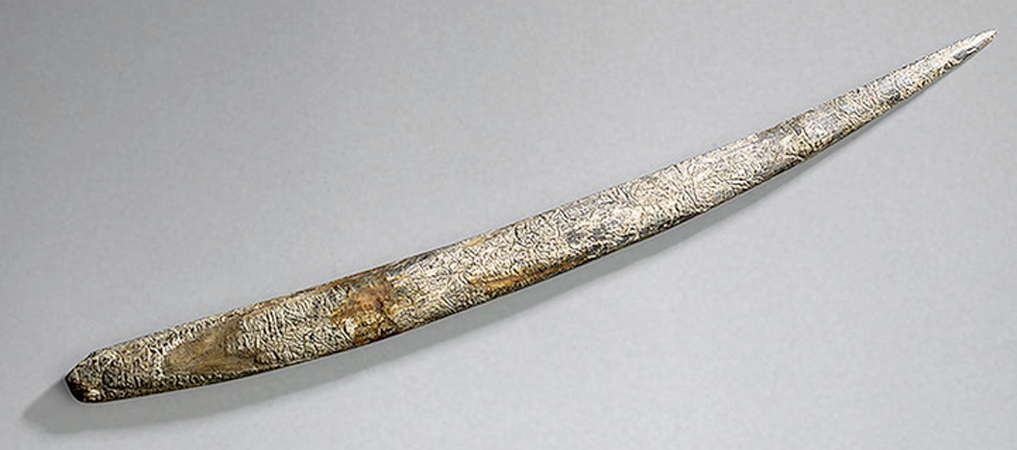
http://donsmaps.com/images24/maltahermitagespike.jpg
Spike. Mammoth tusk; carved. Length 300 mm.
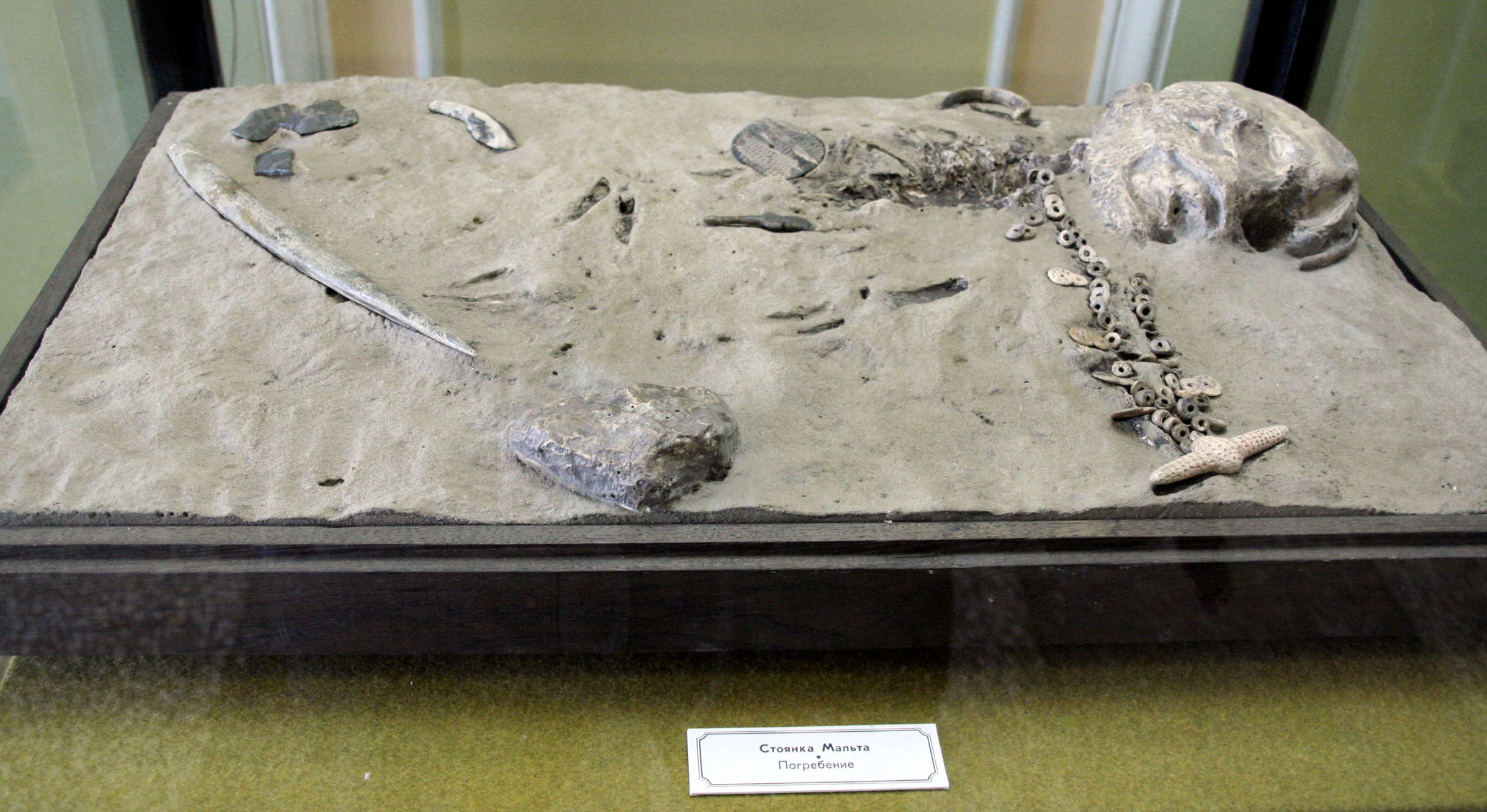
Replica of the child's grave at Mal'ta.
http://donsmaps.com/images26/thehermitage182.jpg
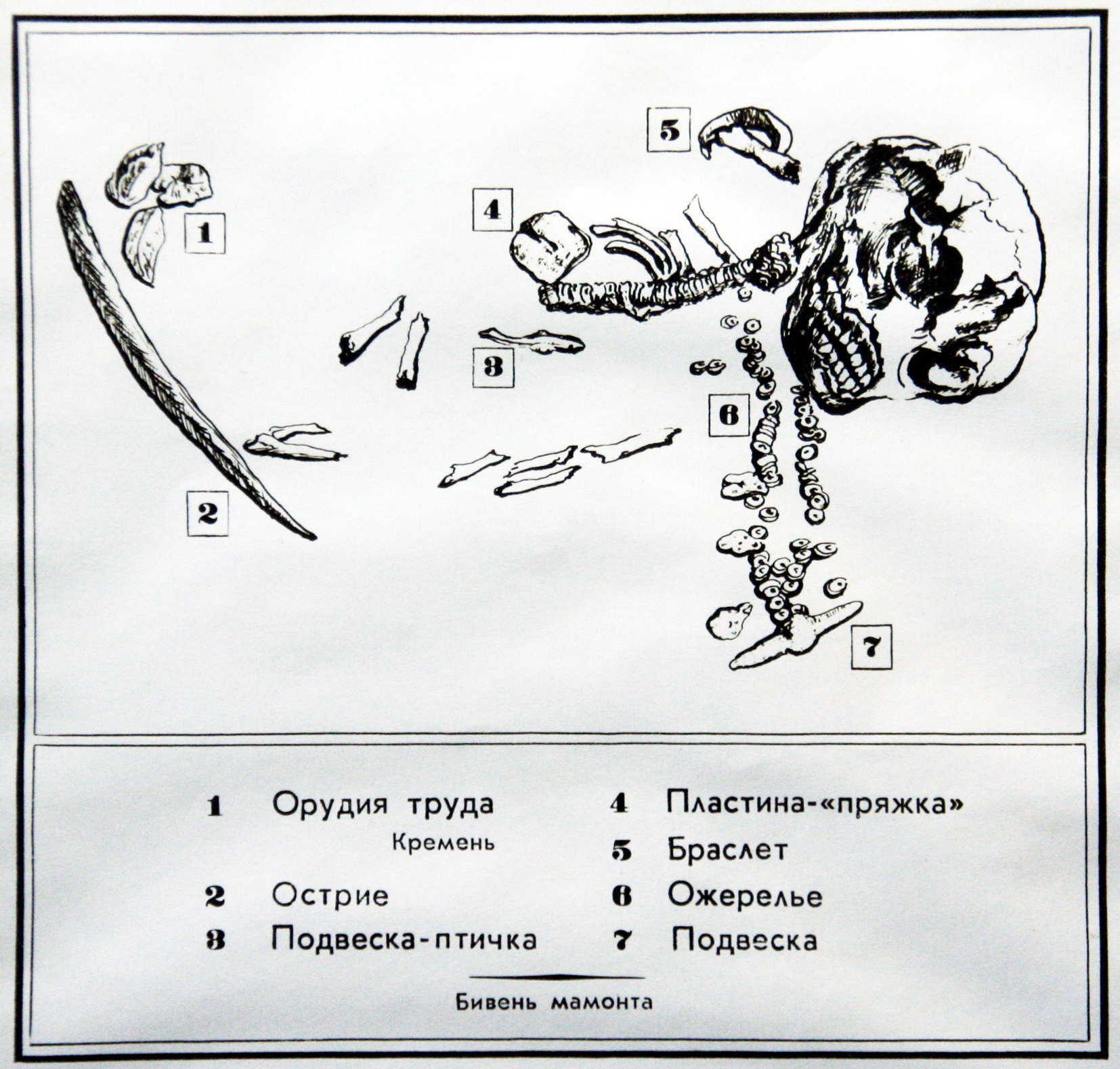
http://donsmaps.com/images26/thehermitage181.jpg
Diagram of the child's grave at Mal'ta.
1 - Flint Tools
2 - Point
3 - Bird Pendant
4 - Plate 'Buckle'
5 - Bracelet
6 - Necklace
7 - Pendant on the end of the necklace
Photo: Vladimir Gorodnjanski 2007
Source: The Hermitage Museum, Saint Petersburg

http://donsmaps.com/images24/maltabracelet.jpg
A good example of such finds is this complete necklace, found as a grave good of the child burial. The child was sprinkled with red ochre and charcoal. The necklace consists of one central and six secondary pendants and 120 flat beads. The surface of the pendants is entirely covered with pit-ornamentation.
Photo and text: http://www.folklore.ee/folklore/vol18/pa06.pdf
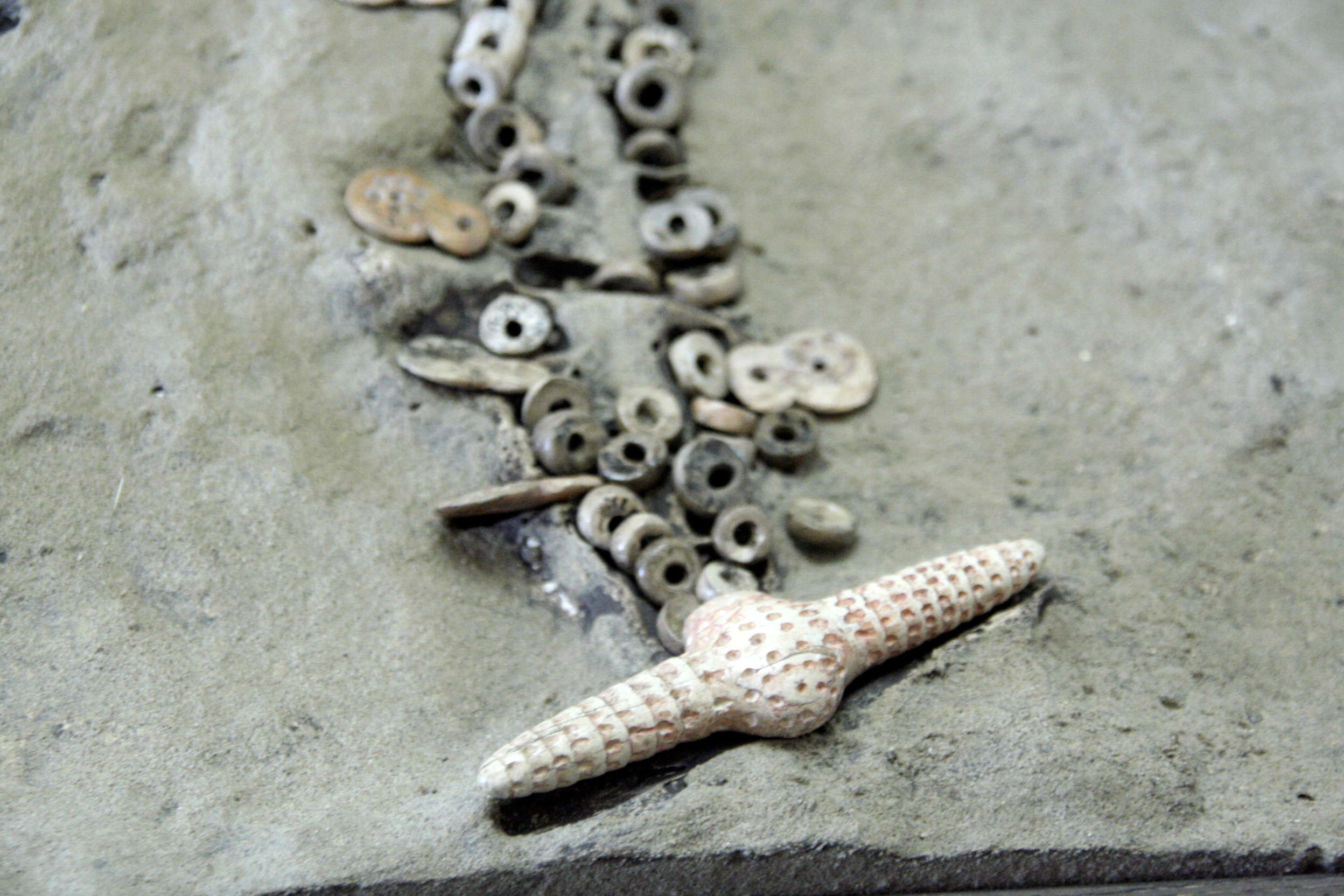
http://donsmaps.com/images26/thehermitage185.jpg
The pendant at the end of the Mal'ta necklace.
Photo: Vladimir Gorodnjanski 2007
Source: The Hermitage Museum, Saint Petersburg
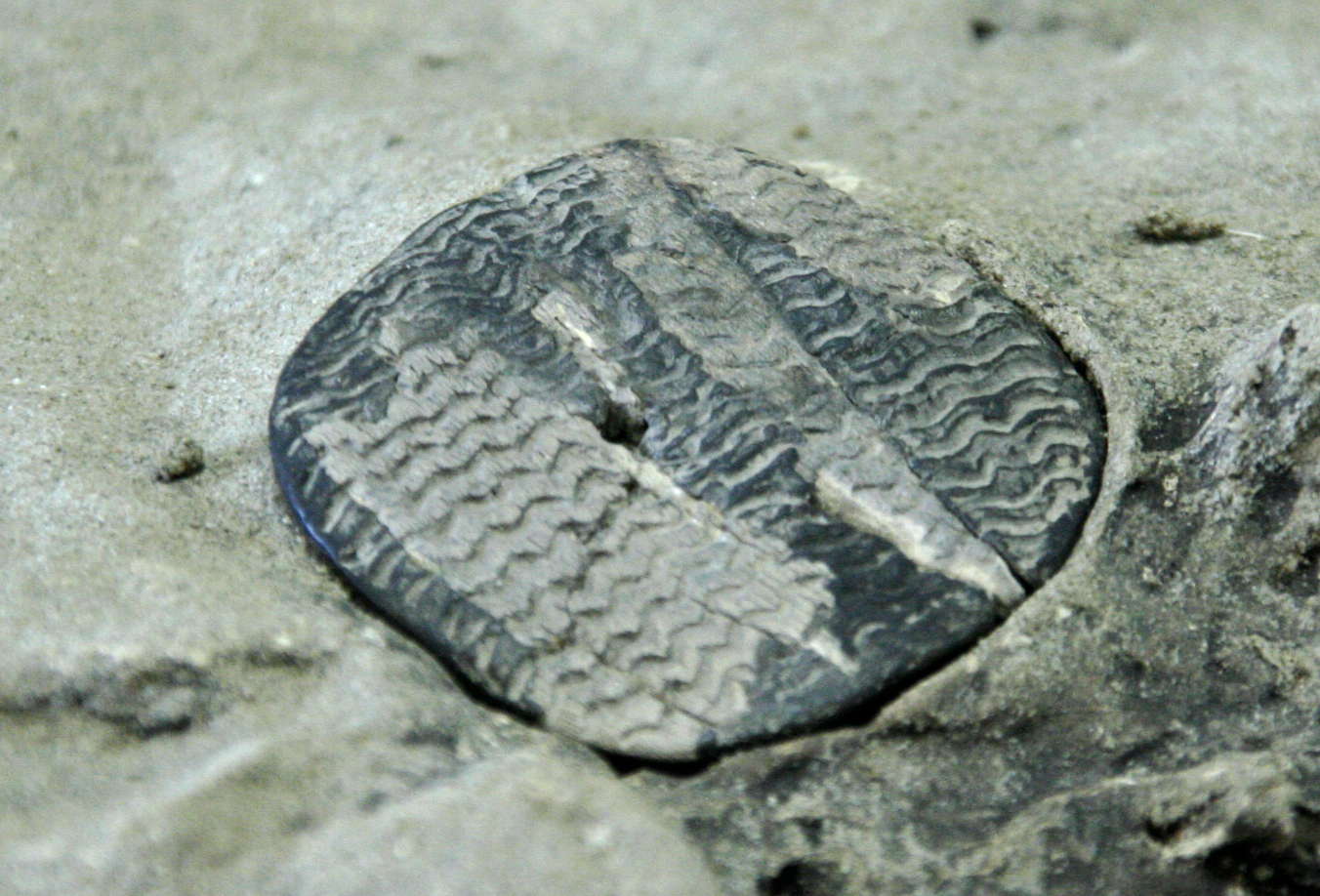
http://donsmaps.com/images26/thehermitage183.jpg
Plate, or buckle. This may have been a breast ornament.
Photo: Vladimir Gorodnjanski 2007
Source: The Hermitage Museum, Saint Petersburg
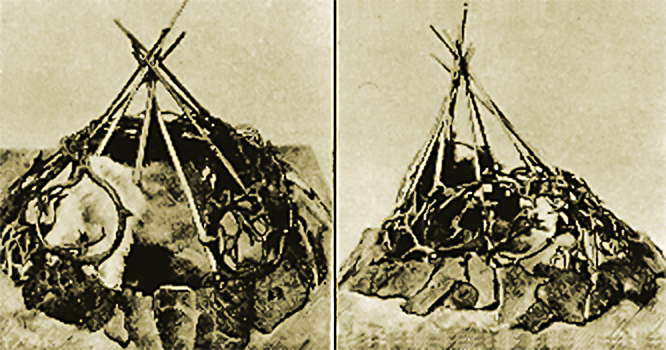
http://donsmaps.com/images25/maltatent.jpg
Circular tents from Mal'ta, Siberia. These animal hide covered structures were bolstered with stones at the base. Photo: http://www.afghanchamber.com/history/stoneages.htm

http://donsmaps.com/images25/stonecirclehut.jpg
Circular dwelling made with a stone wall base, from Mal'ta, Siberia.
Photo: http://www.afghanchamber.com/history/stoneages.htm
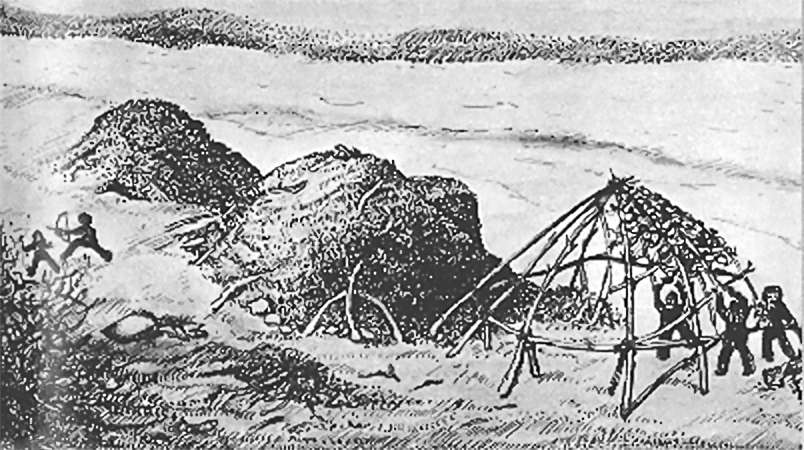
http://donsmaps.com/images25/tentsburet.jpg
Upper Paleolithic huts from Buret', Siberia. These structures date from about 12 000 BP
Photo: http://www.afghanchamber.com/history/stoneages.htm
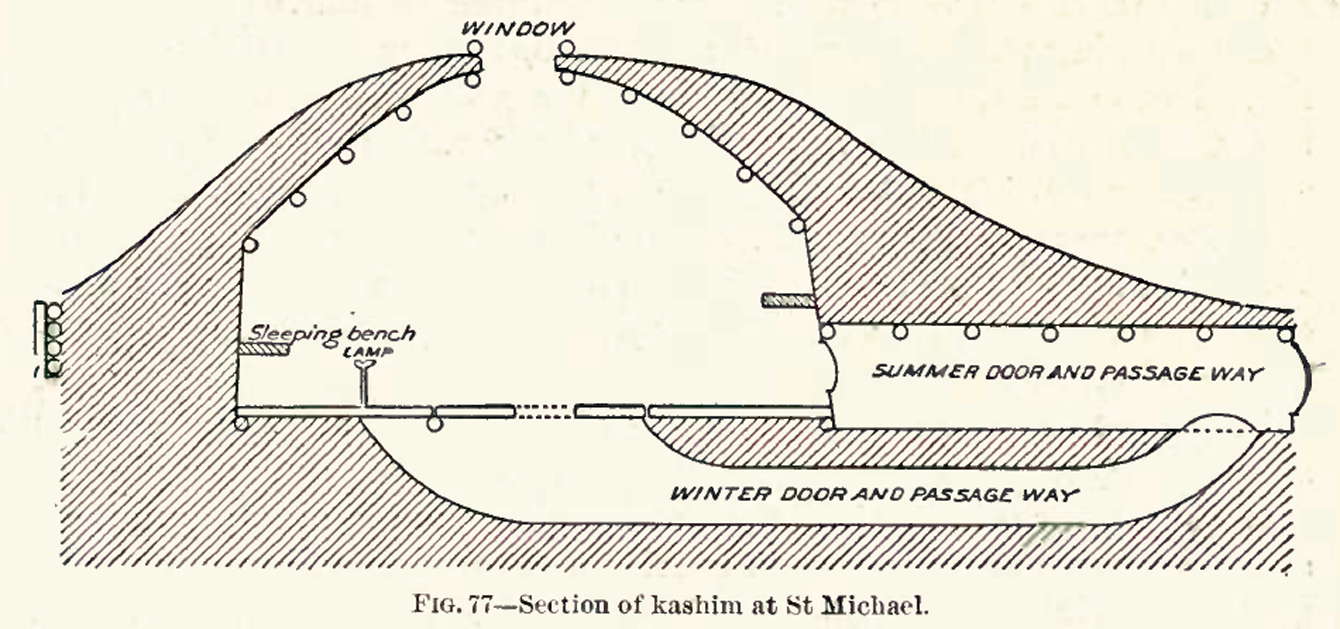
http://donsmaps.com/images24/kashim.jpg
Section of a house in Siberia, possibly similar to those at Buret', showing the corridor to the outside, and the fact that there were two modes of use, one for summer, and the other for winter, which cut down on the loss of heat from the building.
Photo: Nelson (1881)
http://donsmaps.com/malta.html
Raghavan M. et al. Upper Palaeolithic Siberian genome reveals dual ancestry of Native Americans. Nature
The Mal'ta boy was buried with a variety of artefacts, including a Venus figurine

http://www.nihilum.republika.pl/W_malta_10.htm

http://donsmaps.com/images24/maltahermitagespike.jpg
Spike. Mammoth tusk; carved. Length 300 mm.

Replica of the child's grave at Mal'ta.
http://donsmaps.com/images26/thehermitage182.jpg

http://donsmaps.com/images26/thehermitage181.jpg
Diagram of the child's grave at Mal'ta.
1 - Flint Tools
2 - Point
3 - Bird Pendant
4 - Plate 'Buckle'
5 - Bracelet
6 - Necklace
7 - Pendant on the end of the necklace
Photo: Vladimir Gorodnjanski 2007
Source: The Hermitage Museum, Saint Petersburg

http://donsmaps.com/images24/maltabracelet.jpg
A good example of such finds is this complete necklace, found as a grave good of the child burial. The child was sprinkled with red ochre and charcoal. The necklace consists of one central and six secondary pendants and 120 flat beads. The surface of the pendants is entirely covered with pit-ornamentation.
Photo and text: http://www.folklore.ee/folklore/vol18/pa06.pdf

http://donsmaps.com/images26/thehermitage185.jpg
The pendant at the end of the Mal'ta necklace.
Photo: Vladimir Gorodnjanski 2007
Source: The Hermitage Museum, Saint Petersburg

http://donsmaps.com/images26/thehermitage183.jpg
Plate, or buckle. This may have been a breast ornament.
Photo: Vladimir Gorodnjanski 2007
Source: The Hermitage Museum, Saint Petersburg

http://donsmaps.com/images25/maltatent.jpg
Circular tents from Mal'ta, Siberia. These animal hide covered structures were bolstered with stones at the base. Photo: http://www.afghanchamber.com/history/stoneages.htm

http://donsmaps.com/images25/stonecirclehut.jpg
Circular dwelling made with a stone wall base, from Mal'ta, Siberia.
Photo: http://www.afghanchamber.com/history/stoneages.htm

http://donsmaps.com/images25/tentsburet.jpg
Upper Paleolithic huts from Buret', Siberia. These structures date from about 12 000 BP
Photo: http://www.afghanchamber.com/history/stoneages.htm

http://donsmaps.com/images24/kashim.jpg
Section of a house in Siberia, possibly similar to those at Buret', showing the corridor to the outside, and the fact that there were two modes of use, one for summer, and the other for winter, which cut down on the loss of heat from the building.
Photo: Nelson (1881)
References
- Abramova Z., 1995: L'Art paléolithique d'Europe orientale et de Sibérie., Grenoble: Jérôme Millon.
- Bednarik R., 2010: An overview of Asian palaeoart of the Pleistocene, IFRAO Congress, September 2010 – Symposium: Pleistocene art of Asia (Pre-Acts)
- Childe, V.G., 1950: Cave Men's Buildings Antiquity, Volume: 24 Number: 93 Page: 4–11
- Clark G., 1967: The Stone Age Hunters, McGraw-Hill, 1967
- Cohen C., 2003: La femme des origines. Images de la femme dans la préhistoire occidentale,, Paris, Belin-Herscher, 2003, 191 pages.
- Delporte H., 1979: L'image de la femme dans l'art préhistorique, Paris, Picard.
- Jelinek J., 1972: Das grosse Bilderlexikon des Menschen in der Vorzeit, Gütersloh. Bertelsmann-Lexikon-Verlag, P. 333
- Nelson, E., 1881: Eskimos about the Bering Strait
- Soffer, O., Adovasio, M., Hyland D., 2001: Reply to 'More on the Venus Figurines', Current Anthropology, Volume 42, Number 3, June 2001, pp 410-412
http://donsmaps.com/malta.html
No comments:
Post a Comment